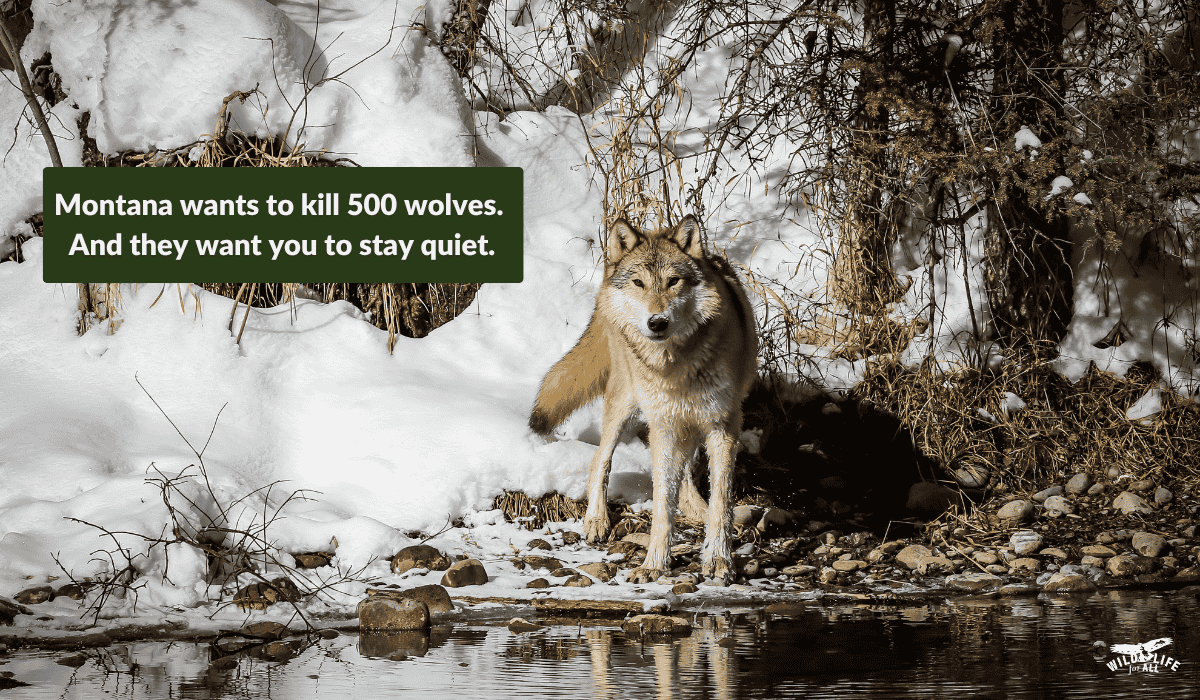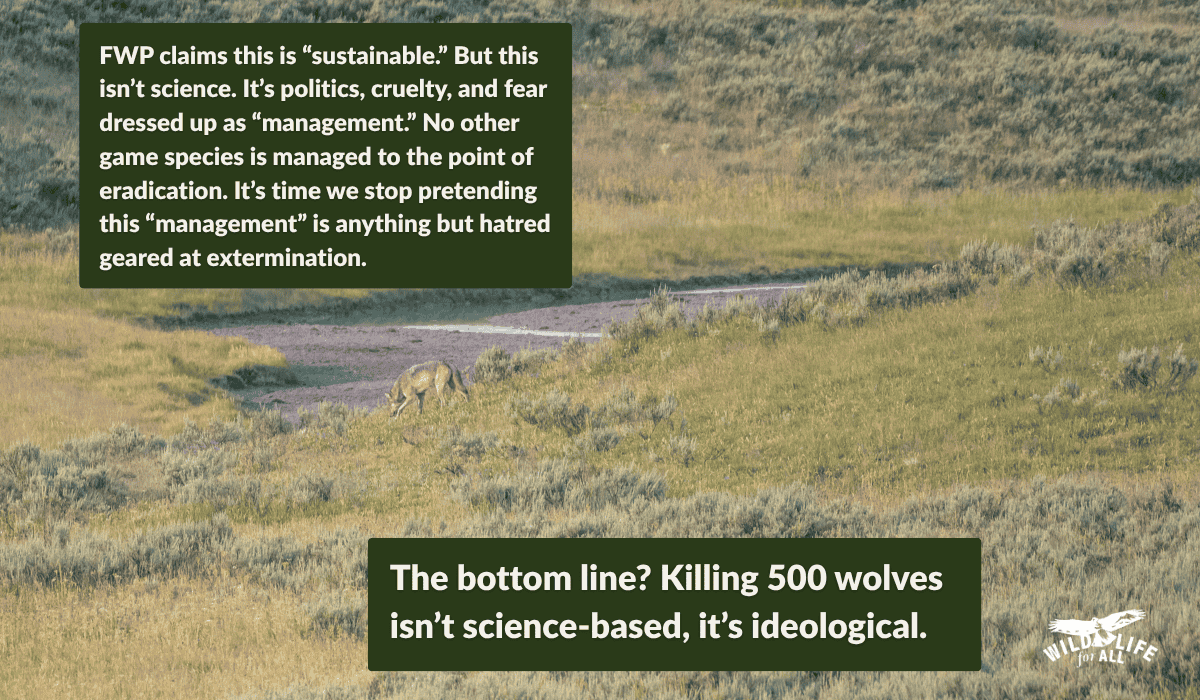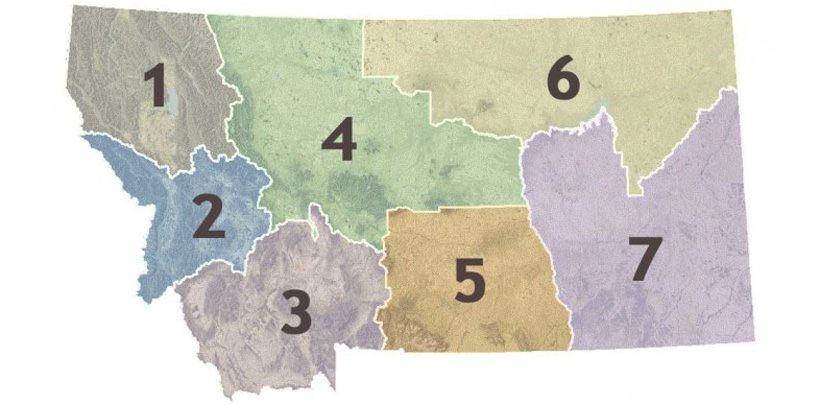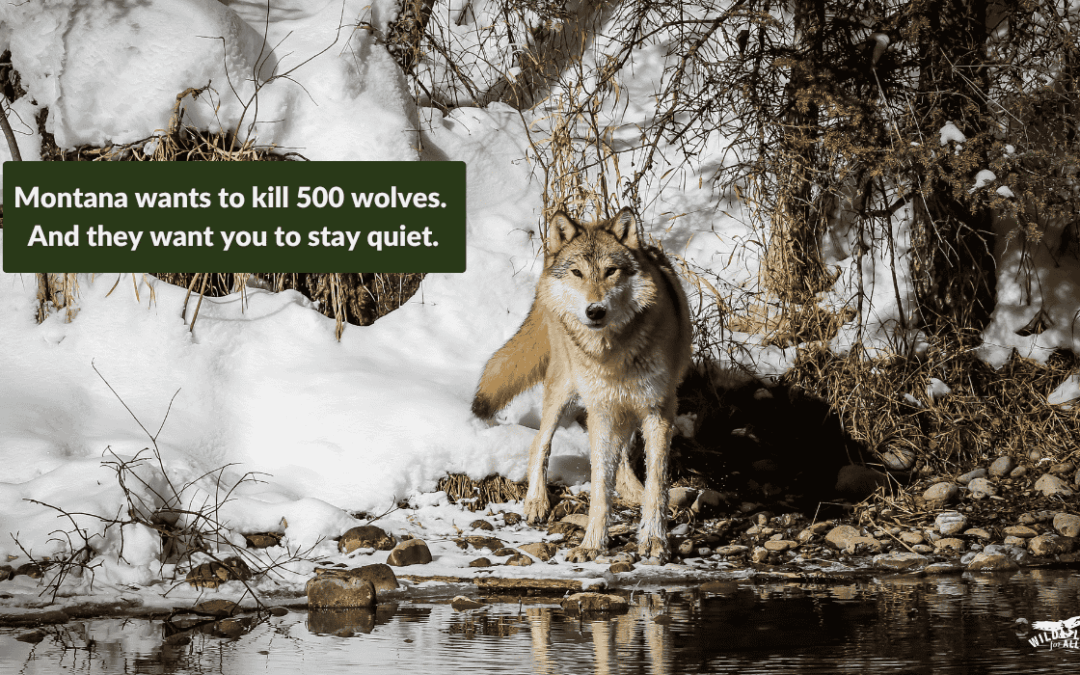The Montana war on wolves is escalating. The state’s proposed regulations threaten to wipe out wolves within five years.

Alert: New Amendments Reveal Montana Commission Wants to Double Down on Wolf-Killing Ahead of Court Review
Just after a federal judge ruled that the U.S. Fish & Wildlife Service failed to properly consider science in its decision to not restore ESA protections for wolves—and specifically named Montana’s extreme anti-wolf policies as a threat—Montana Fish, Wildlife & Parks (FWP) commissioners added proposed amendments for the August 21 Commission meeting. The message? More reckless wolf killing is still on the table.
What’s in the latest plan:
-
Extended hunting seasons in Regions 1 and 2
-
A statewide quota of 458–500 wolves—nearly half of the entire population
-
A new requirement to immediately kill any uncollared wolf caught in a trap
-
Expanded trapping zones statewide
These amendments drop amid court scrutiny of federal protections—but Montana continues the slaughter regardless. The federal ruling may require the Fish & Wildlife Service to reconsider protections, but it cannot stop state-led killing programs in the meantime.
What you can do:
Public comment on the amendments closes August 17. Be specific:
-
Email: FWComm@mt.gov
-
Or submit online here, selecting the dropdown for each amendment
-
Focus on the proposals: extended seasons, inflated quotas, forced kills of uncollared wolves, and expanded trapping zones
State-level governance reform isn’t just theory—it’s our last line of defense. Wolves may now be edging toward federal protection, but Montana’s Commission must hear from us before it’s too late.
Montana’s War on Wolves: Science Ignored, Ecosystems at Risk
500 wolves. One season. One deeply broken system.
Montana Fish, Wildlife, and Parks (FWP) is proposing to allow up to 500 wolves to be killed during the 2025–2026 hunting and trapping season. If approved, this reckless plan would plunge Montana’s wolves below the minimum viable population threshold, imperil ecosystem health, and further erode public trust in wildlife governance.
A Montana war on wolves via this proposal would make it even easier for a small minority of politically connected people to decimate wolf populations across the state. This isn’t science. It’s fear. It’s cruelty. And it’s politics—dressed up as “management.”
The proposed regulations include:
- A statewide kill quota of 500 wolves, up from 334 last year.
- Individual limits of 30 wolves per person—15 via hunting, 15 via trapping.
- Removal of regional quotas, including in vulnerable areas like Region 3 (north of Yellowstone).
- Continued use of snaring and trapping, despite their inhumanity and impact on non-target species like grizzlies, wolverines, and lynx.
The quota is based on the Integrated Patch Occupancy Model (iPOM)—a tool that multiple scientific reviews have found deeply flawed. According to a 2023 critique from the Yellowstone Ecological Research Center, iPOM overestimates wolf populations by up to 150% (Crabtree et al., 2023; Creel, 2022). This means FWP is planning a mass cull using a fantasy number that does not reflect on-the-ground reality.
Even FWP’s own forecasting report (2023–2027) admits that harvesting 500 wolves annually would cause a population collapse within five years, falling below the state’s legal minimum of 15 breeding pairs. And yet, they’re moving forward, using a model that is widely known to be flawed and overestimates.
Meanwhile, wildlife watching and wolf tourism generates $82 million per year in the Greater Yellowstone area alone (WildLivelihoods, 2022). Compare that to the $285,000 generated annually by wolf hunting license sales—a drop in the economic bucket.

FWP claims it consulted “stakeholders” when drafting this proposal. The only group invited? The Montana Trappers Association. This isn’t consultation—it’s collusion.
Montanans want their wildlife agencies to reflect science, democracy, and public values—not cruelty and corruption. Public trust is being eroded by a system captured by anti-wolf special interests. Killing 500 wolves isn’t science-based, it’s ideological.
Wolves are not villains, pests, or trophies. They are highly intelligent, social animals who regulate prey populations, heal ecosystems, and help restore wild places. When wolves are on the landscape, everything—from elk herds to riverbanks—functions more naturally.
But time and again, state agencies ignore this reality. Instead of honoring science and ecological truth, Montana’s wildlife policies are being shaped by outdated, anti-predator ideologies and the lobbying of powerful interest groups. The new wolf-killing proposal is just the latest chapter in a broader assault—on wolves, on science, on public input, and on democratic values.
This is not just a wildlife issue. It’s a governance issue. And it’s a justice issue.
Montana’s wolf policy reflects a deeper sickness in how wildlife decisions are made across the U.S.—where political insiders control decision-making, and where fear is weaponized to maintain power.
But we’re not powerless. The Commission can still stop this plan. Montana residents have until August 4 to call for an end to senseless slaughter and instead demand a future guided by sound science, compassion, and democracy.
Let Montana know: Wolves are not our enemies. They’re guardians of wild places, ecosystem stewards, and part of our shared future. It’s time to stop the slaughter.
TAKE ACTION TO STOP THE MONTANA WAR ON WOLVES
- Submit your comment by August 4 (Scroll to “Fall 2025–Winter 2026 Furbearer and Wolf Trapping and Hunting Seasons and Quotas” and use the drop-down menu to find the comment form)
- Email the Commission: FWComm@mt.gov
- If you live in Montana, sign up to testify at the August 21 Commission hearing
- If you live in Montana, reach out to your commissioner (see below)
SAMPLE COMMENT
I strongly oppose the proposed 2024–2025 wolf hunting and trapping regulations. These policies are not grounded in sound science, violate the public trust, and pose a serious threat to the long-term viability of wolves in Montana and the greater Northern Rockies.
-
- The proposal leans heavily on the flawed Integrated Patch Occupancy Model (IPOM), which has been widely criticized by scientists and independent experts for underestimating population declines and overprojecting wolf presence.
- Even using FWP’s own data and modeling, if the state continues with the same aggressive quotas and policies, wolves in Montana could be effectively wiped out within five years. That is not management—it is extermination.
- Allowing 500 wolves to be killed in one year will fragment packs, reduce genetic connectivity, and increase the risk of local and regional extirpation. The loss of even a few dispersing individuals can have serious consequences for gene flow and recovery across the Northern Rockies.
- The Commission should maintain regional quotas instead of switching to a statewide quota to limit killing in places with already rapidly declining wolf populations, like Region 3 north of Yellowstone.
- Under no circumstances should a single person be able to kill 30 wolves.
- The Commission should limit the kill quota outside of Yellowstone in WMUs 313 and 316 to one wolf per unit, the lowest quota allowed under current legislation.
- There is no scientific or ethical justification for these extreme policies. Livestock losses to wolves remain extremely low—less than 1% of all cattle and sheep deaths according to USDA data—and wolf populations are not “overabundant” by any ecological measure.
I urge the Commission to reject this destructive proposal and instead uphold its legal and moral responsibility to manage wolves as part of a healthy, interconnected ecosystem. Montanans—and the broader public—deserve science-based wildlife policy that serves the common good, not fear-driven political agendas.

There are three options to testify in person at the August 21 meeting to stop the Montana war on wolves:
-
Attend and testify at Montana WILD Auditorium, 2668 Broadwater Ave., Helena., MT 59602.
-
Attend and testify at any of the seven FWP regional offices.
-
Comments can also be made via Zoom. Registration for Zoom comment will open prior to the meeting and be posted HERE
The meeting begins at 8:30 am. The “Furbearer and Wolf Trapping and Hunting Seasons and Quotas” are 11th and last on the agenda. This could change.
IF YOU LIVE IN MONTANA, make sure you email and call your Fish and Wildlife Commissioner.
Region 1 – Ian Wargo – Commission Vice Chair, Whitefish, 406-438-1714
Region 2 – Jeff Burrows, Hamilton, 406-438-1148
Region 3 – Susan Kirby Brooke, Bozeman, 406-438-0460
Region 4 – KC Walsh, Martinsdale, 406-438-3625
Region 5 – Brian Cebull, Billings, 406-438-2551
Region 6 – Lesley Robinson – Commission Chair, Dodson, 406-301-0787
Region 7 – William Lane, Ismay, 406-438-0143


